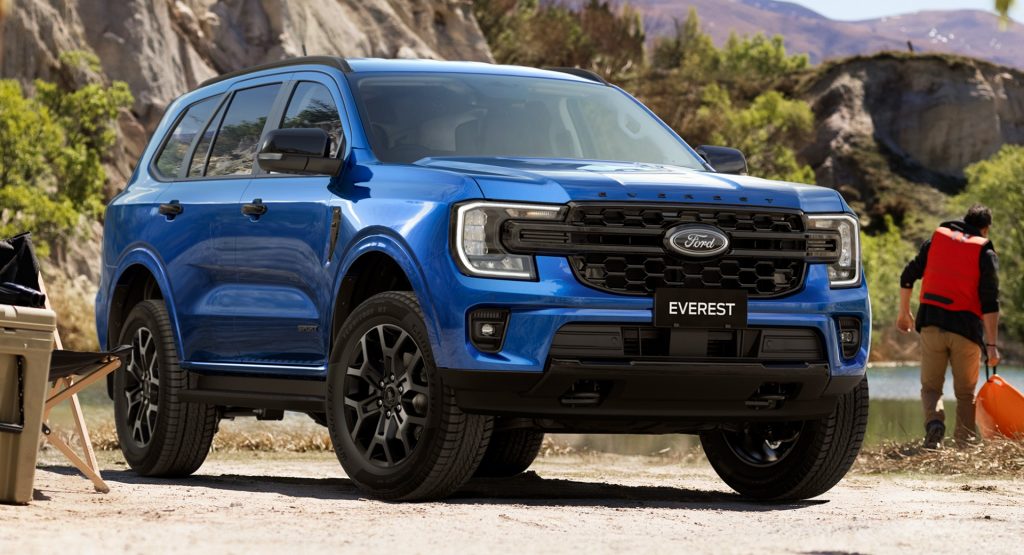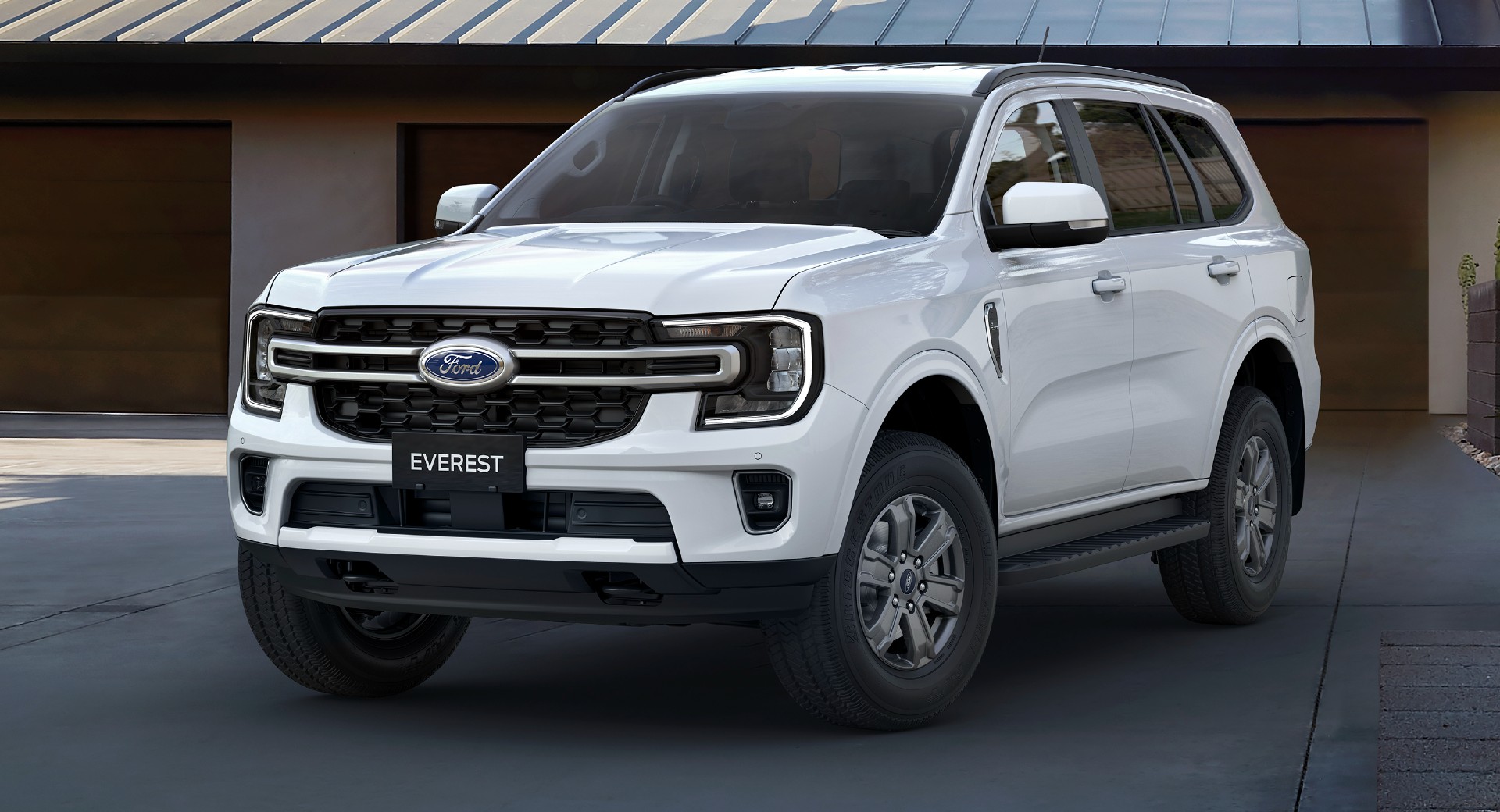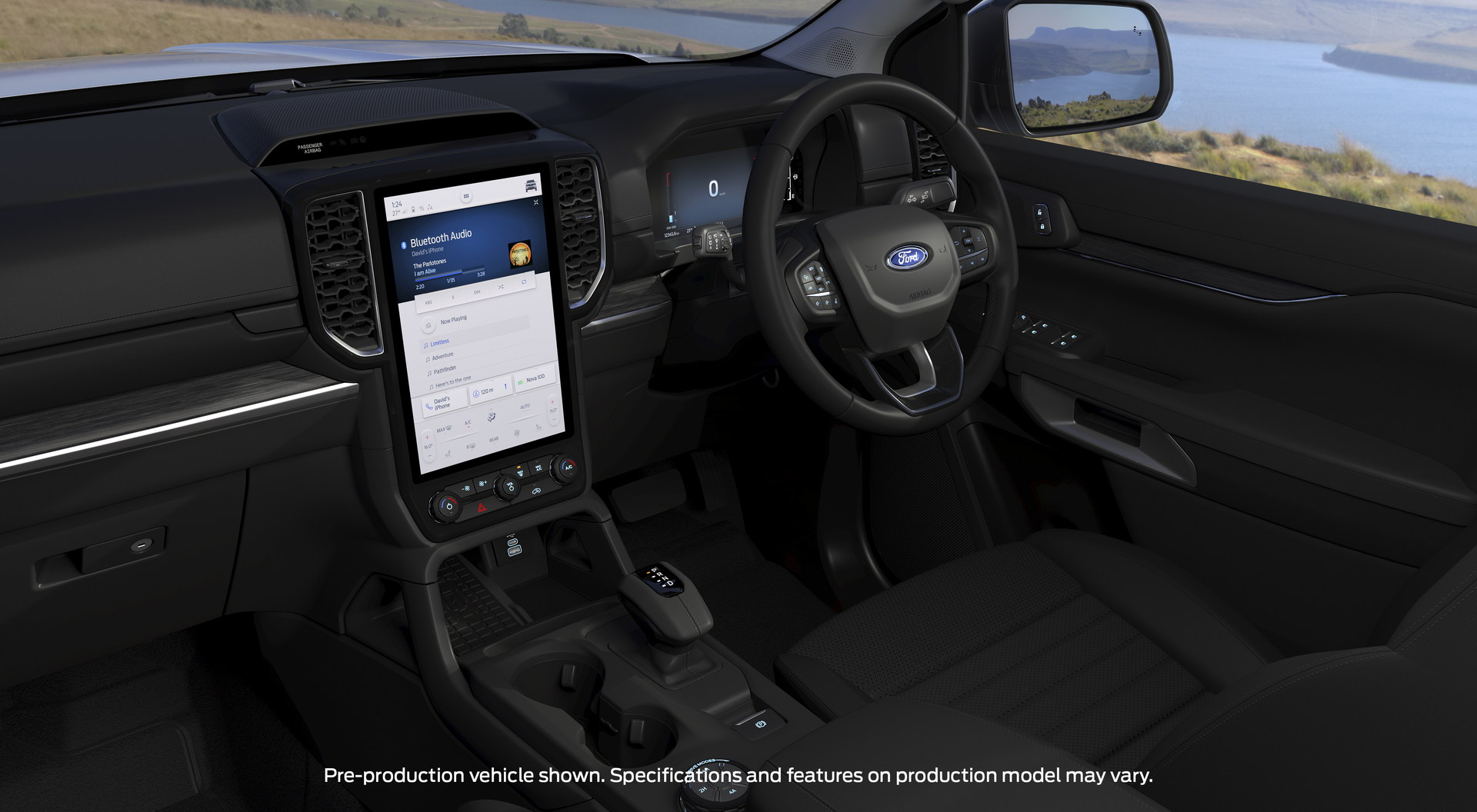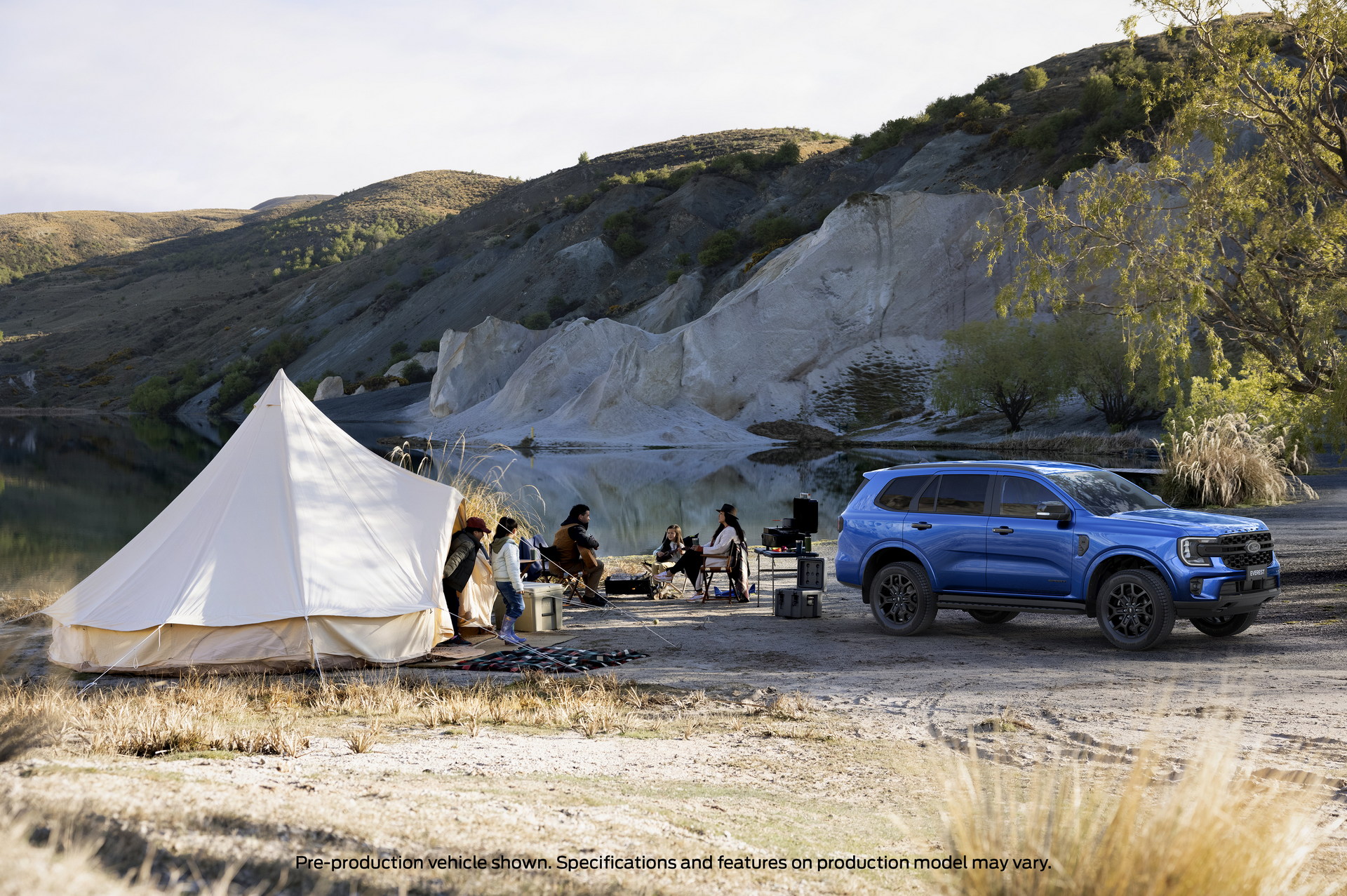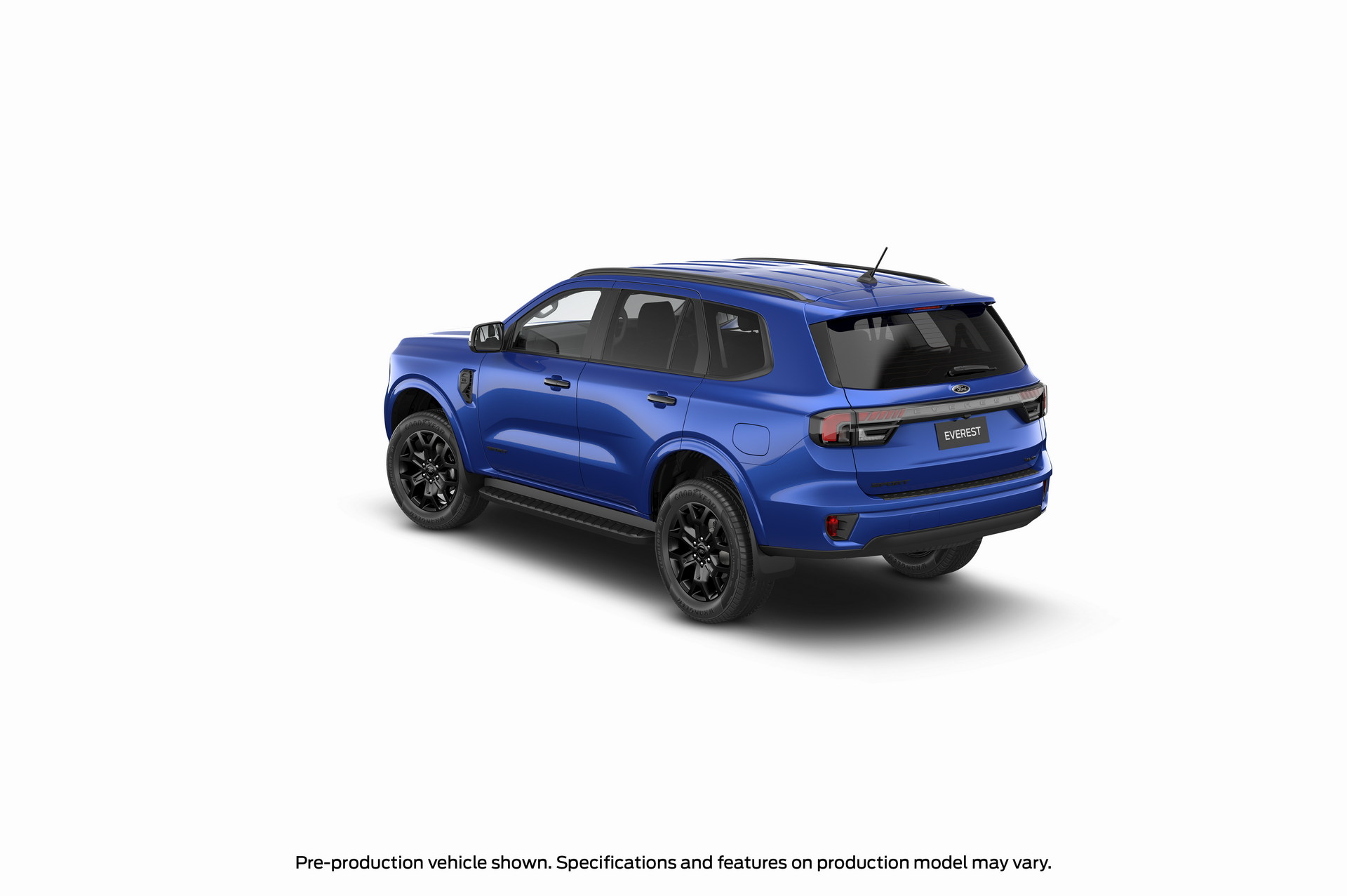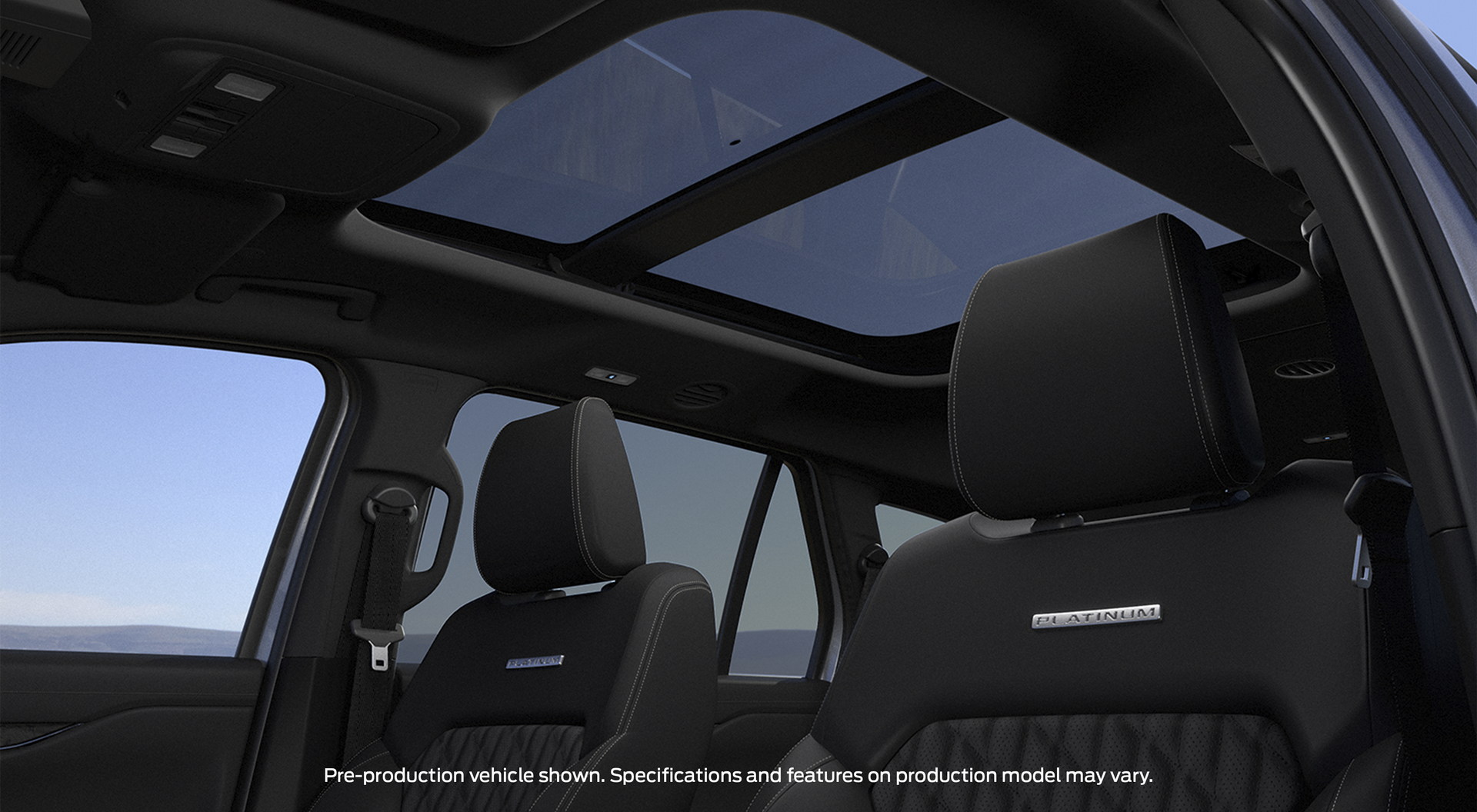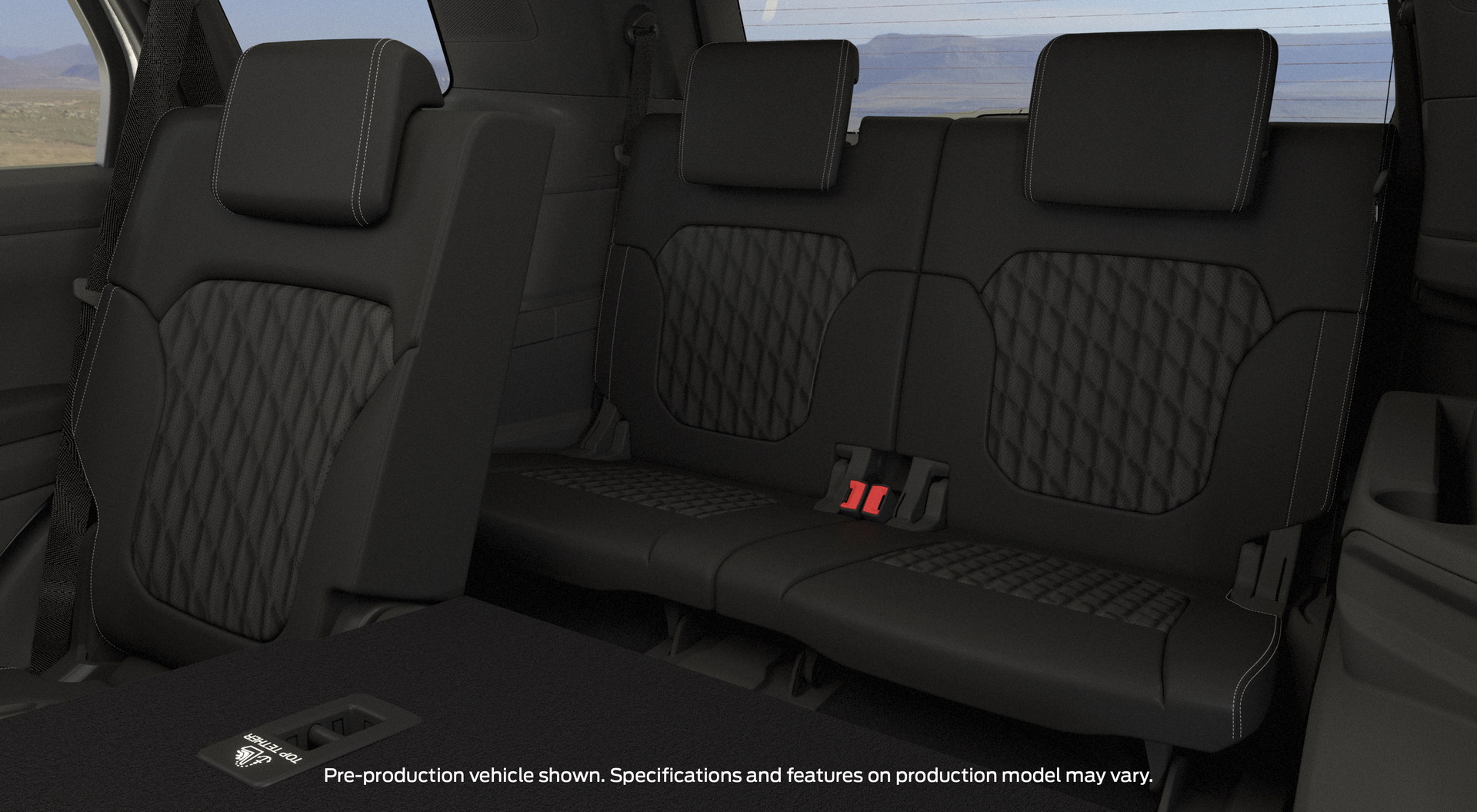Following the presentation of the Australian-spec Ranger, Ford Australia has released all the technical details of the mechanically-related Everest, which goes on sale offering the choice of two turbodiesel engines and four trim levels.
Starting with the engine options, the diesel-only range starts with the entry-level 2.0-liter Bi-Turbo producing 207 hp (154 kW / 209 PS) and 500 Nm (369 lb-ft) of torque. Power is sent to the rear (4×2) or all four wheels (4×4) through a 10-speed automatic gearbox. For those who want more power, there is the larger and more potent 3.0-liter V6 Turbo Diesel producing 247 hp (184 kW / 250 PS) and 600 Nm (443 lb-ft) of torque. This one is exclusively combined with all-wheel drive and the same 10-speed automatic transmission.
See Also: Come On Ford, An Everest Raptor Is The One Everyone Wants
While the existing engines are shared with the Ranger pickup, the Everest is not getting the more powerful twin-turbo 3.0-liter V6 petrol with 392 hp (292 kW / 397 PS) found in the Ranger Raptor, nor the less powerful single-turbo 2.0-liter diesel with 167 hp (125 kW / 170 PS).
All variants of the Everest have a maximum towing capacity of 3,500 kg (7,716 pounds) braked. Depending on the engine and trim, curb weight ranges from 2,259 kg (4,980 pounds) to 2,492 kg (5,494 pounds), with a payload between 741 kg (1,634 pounds) and 658 kg (1,451 pounds) respectively.
See Also: Europe’s Ford Ranger Pickup Shows Off Its Practical Features
Ford Australia is offering four trim levels, two for each engine. The entry-level Ambiente and Trend are combined with the 2.0 Bi-Turbo Diesel, while the more generously equipped Sport and Platinum are reserved for the 3.0 V6 Turbo Diesel.
Standard equipment in the entry-level Ambiente includes LED lights, 17-inch alloy wheels with all-season tires, five seats, cloth upholstery, dual-zone climate control, a 10.1-inch touchscreen, an 8-inch digital instrument cluster, 8-speaker audio, 9 airbags, and selectable driving modes (Normal, Eco, Tow/Haul, Slippery). The Trend adds 18-inch alloy wheels, leather accents, a seven-seater cabin, power liftgate, privacy glass, a 12-inch infotainment touchscreen, and two additional off-road modes (Sand, Mud/Ruts) when in 4×4 guise.
Upgrade to the Sport and besides the 3.0-liter engine, you get black exterior accents, a set of cool-looking 20-inch black alloy wheels, heated and cooled front seats, leather upholstery, and a 10-speaker audio system. Finally, the flagship Platinum gets a more premium look thanks to the Satin Chrome exterior accents, the Matrix LED headlights, and 21-inch alloy wheels. This is the only Everest variant with the 12.4-inch digital instrument cluster matching the 12-inch infotainment, a premium B&O audio system with 12 speakers, ambient lighting, a heated second row, quilted leather upholstery, a 360-degree camera, and active park assist.
Besides Australia where it was developed, the Ford Everest will also be available in select markets including the Philippines, Thailand, and India where it gets the Endeavour name. The Ford Everest’s upscale looks and equipment on higher trims mean that rivals are not strictly limited to truck-based SUVs (Toyota Fortuner, Mitsubishi Pajero Sport, Nissan X-Terra, and Isuzu MU-X) but can expand to more expensive ladder-frame 4x4s including the Toyota Land Cruiser Prado.




